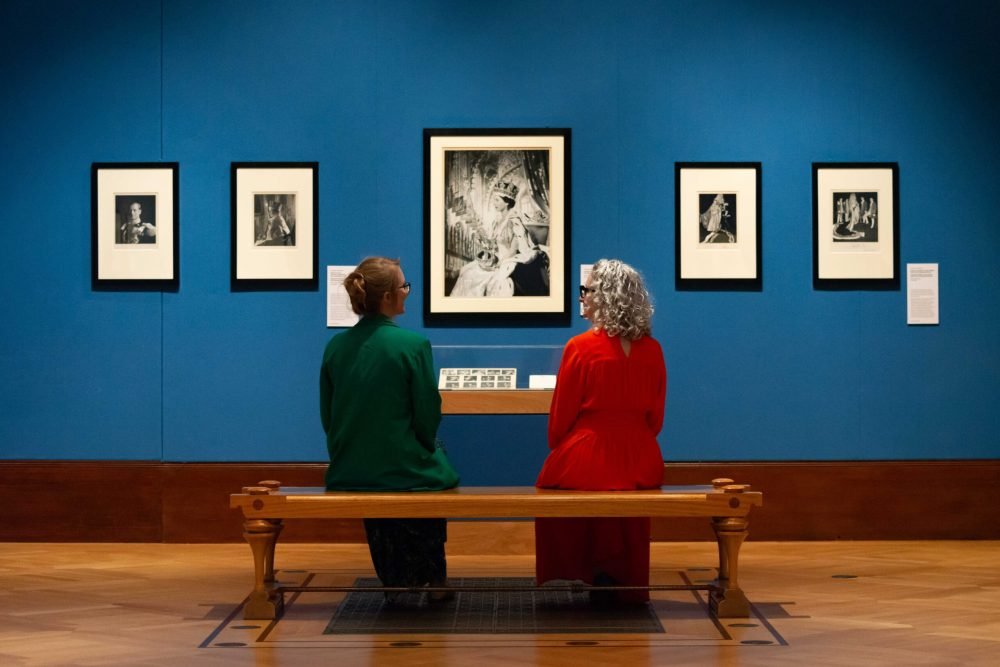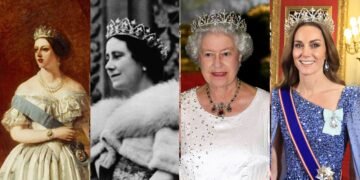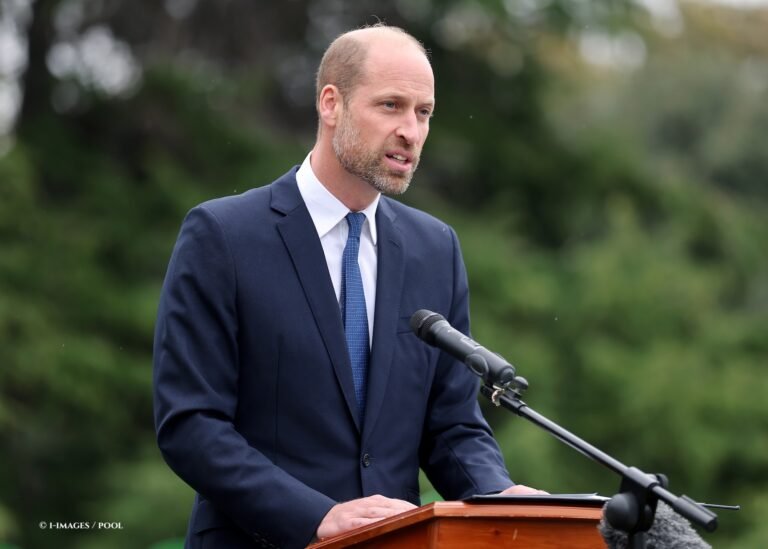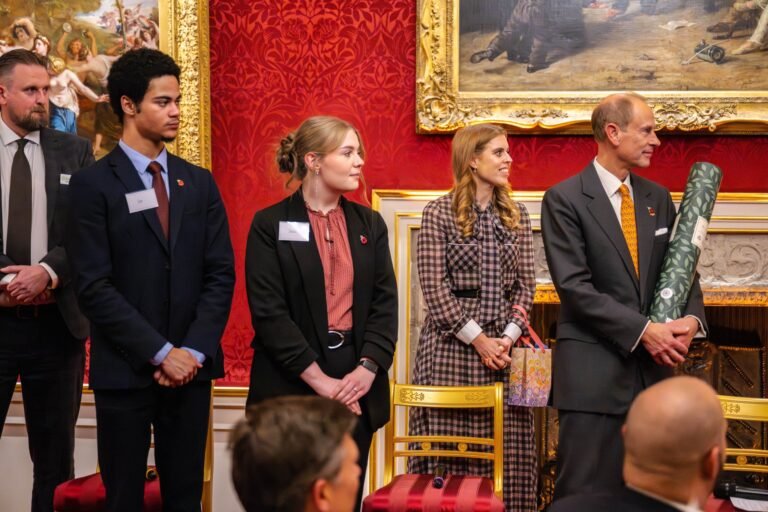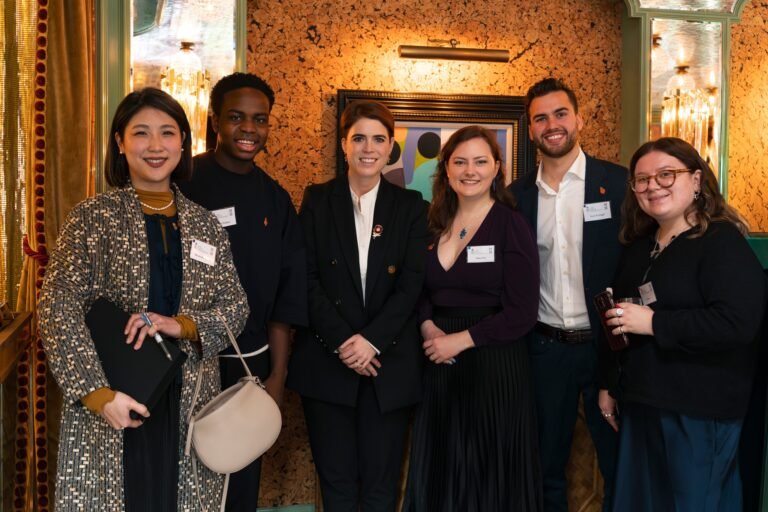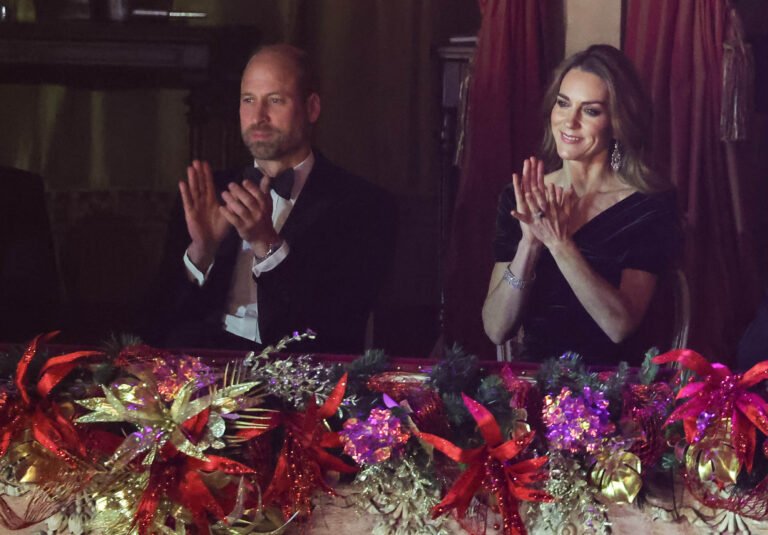A new exhibition at the King’s Gallery has just opened, diving into the world of royal photography. We had the pleasure of attending the ‘Royal Portraits: A Century of Photography’ preview, prior to its opening to the public, and we certainly recommend royal watchers pay it a visit!
The exhibition documents the visual legacy of the Monarchy and how photography has played a key role in influencing how the Royal Family are perceived by the public through history. Throughout the exhibition, visitors are treated to getting up close with some of the most iconic royal photographs, which have been taken of the last century, capturing key moments in British royal history.
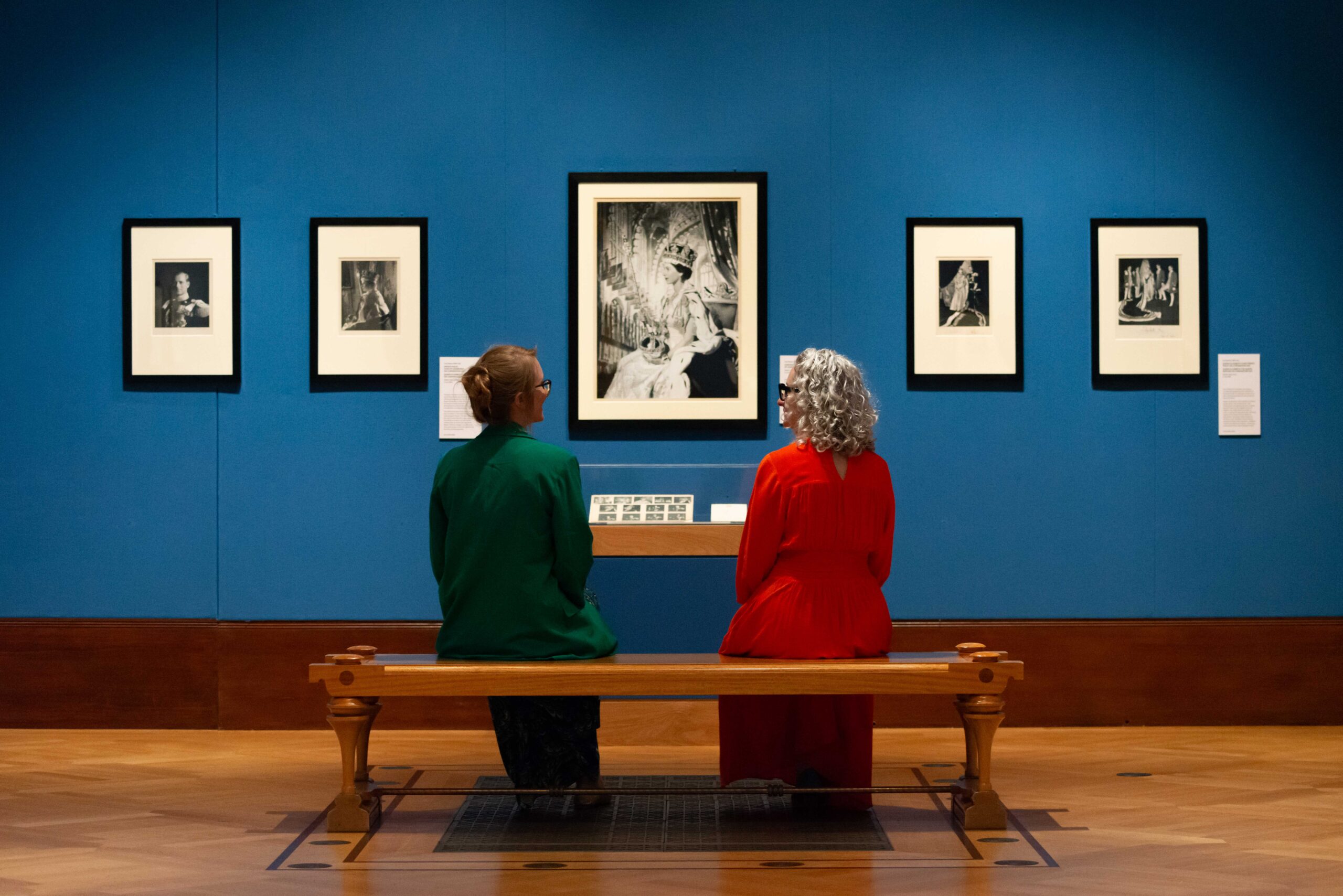

Its location, at Buckingham Palace, comes as the gallery has been renamed, following The King’s Accession.
The exhibition provides guests with some unseen intimate family moments, including one of our highlights – an image of four royal mothers, Elizabeth II, Princess Margaret, Princess Alexandra and The Duchess of Kent, all holding their newborn babies in 1964.
The portrait was taken by Princess Margaret’s husband, Lord Snowdon, as a thank you to Sir John Peel, the obstetrician who had overseen the safe delivery of all four royal babies. These were:
– James Ogilvy (first child of Princess Alexandra, born on February 29th)
– Prince Edward (Elizabeth II’s fourth child, born on March 10th – now Duke of Edinburgh)
– Lady Helen (first daughter of the Duchess of Kent, born April 28th)
– Lady Sarah (daughter of Princess Margaret, born May 1st – now Lady Sarah Chatto)


Accompanying the photograph was a handwritten letter from Princess Margaret to her sister, asking her ‘Darling Lilibet’ to sign a print ‘as a souvenir of an extraordinary two months of delivery’.
The exhibition captures the work of key royal photographers, starting with Cecil Beaton. Beaton is considered to be one of the greats in capturing members of the Royal Family, having received a flourish of commissions during the 1930s.

His photos demonstrate the changing public perception and helped to create a fairytale-like image of the young Queen Elizabeth II as both Sovereign and modern mother. Early portraits of the Royals taken by Beaton saw him use a No. 3A folding pocket Kodak camera – a hand-held camera granting him freedom of movement around his subject.
A number of photographs taken by Beaton are on display at the exhibition, including a portrait of Prince George, the Duke of Kent. The image shows the young Duke in dramatic tones with a sharp background, emphasised by the use of blacklight, a technique commonly used by Beaton during the 1920s and 30s.

A portrait of Princess Louise, Duchess of Argyll taken by Beaton also takes centre stage and was a key moment in Beaton’s career as a royal photographer. Following the sitting, letters between the Duchess’ lady-in-waiting and Beaton highlighted the features Princess Louise wanted to have enhanced and what had to be slightly toned down. Despite noting that the photograph ‘had received already a great deal of attention’, Beaton further enhanced the portrait.
Beaton was responsible for many photos of the Queen Mother in the 1930s, which include the garden pictures at the palace, and some wartime snaps – showing startling contrast.


Also on display are a number of photographs taken by Lord Snowdon, Princess Margaret’s husband, who had became the go-to family photographer. This meant he gained a unique access to and understanding of his sitters even before his marriage.
Antony Armstrong-Jones became a sought-after photographer from the mid-1950s, with his fresh and modern style, reliant on natural light, with plain and uncluttered backgrounds, therefore met his sitters were showcased in a straightforward and unpretentious manner. The Royals started commissioning Snowdon in 1956, two years prior to him meeting Princess Margaret.


Our favourite of Snowdon’s photographs on display is one of his first royal commissions when he was aged 26 – he captured Prince Charles and Princess Anne in 1956, with the photograph then being released to mark Charles’ 8th birthday the following year.
The picture shows how the photographer and his subjects were experimenting with reflects in the mirrored doors in the Picture Gallery at Buckingham Palace. There is a sense of play and perspective which is enhanced by the blurred armchair.
We also see some of the iconic images associated with Snowdon, like the glamorous shot of his wife.

The exhibition concludes by looking at the work of Hugo Burnand, who has famously captured the royals in recent times. Securing a number of commissions to photograph Queen Camilla in in connection with her charity work for the Royal Osteoporosis Society, Burnand has taken some of the most important and special royal occasions due to his elegant and timeless style, enriched by warmth and intimacy.
Over time, the royal subjects and Burnand built a professional and personal rapport, gaining each other’s trust which led to a number of commissions for the photographer. By doing so, he follows in the tradition of some of his illustrious predecessors, such as Beaton or Snowdon, while injecting his own modern style to contribute to the changing nature of the royal portrait.
A number of photographs taken by Burnand were on display ranging from the wedding of The Prince and Princess of Wales in 2011 to the official portraits of the Coronation in 2023.


The exhibition also highlights the relationship between old and modern portraits, with photographers in the current day taking inspiration from those in the craft decades prior. A clear example of this is one of the photographs taken to mark The Princess of Wales’ 40th Birthday in 2021, contrasted to a portrait of Alexandra, Princess of Wales, taken in 1864. Roversi has taken inspiration from the 1864 portrait, which shows the pair in similar positions, albeit they are looking in slightly different directions. Their clothing is also similar in the fact they are both wearing dresses with bows on.

Another example of where historical portraiture has played a key influence in modern day portraits are those captured by British photographer, Hugo Rittson Thoma, of Elizabeth II and Prince William in 2015. The photos were part of an exhibit called ‘The Queen’s People’. The photographs of William and Elizabeth shows them from different angles.
You might remember them.
The late Queen is pictured wearing a crimson dress by designer Angela Kelly, whilst William is seen wearing his long black Irish Guards frockcoat. Rittson Thomas has taken inspiration from a triple portrait of Charles I using the same effect, showcasing the importance of traditions and continuity.
Also on display is a previously unseen photograph of Elizabeth II, The Princess Royal, Zara Tindall and Mia Tindall in 2016 by Annie Leibovitz. This photograph is partially special as it was taken during the same sitting as a photograph of Elizabeth II and The Princess Royal to mark the late Monarch’s 90th birthday.
This image of four royal generations has a particular importance, as exactly one year before the snap was taken saw the introduction of the Succession to the Crown Act. The Act ended the historic system of male primogeniture and grants a female heir an equal place in the line of succession, basing the line of succession solely on age and not gender.
Tickets to the exhibition can be booked here.
Royal Collection Trust has launched a new scheme offering £1 tickets to those on Universal Credit and other named benefits, available for this exhibition between 17th May and 8th July. The King’s Gallery will also continue to offer concessionary rates, including reduced tickets for Young People, and the option to convert standard tickets bought directly from Royal Collection Trust into a 1-Year Pass, allowing free re-entry for 12 months.

